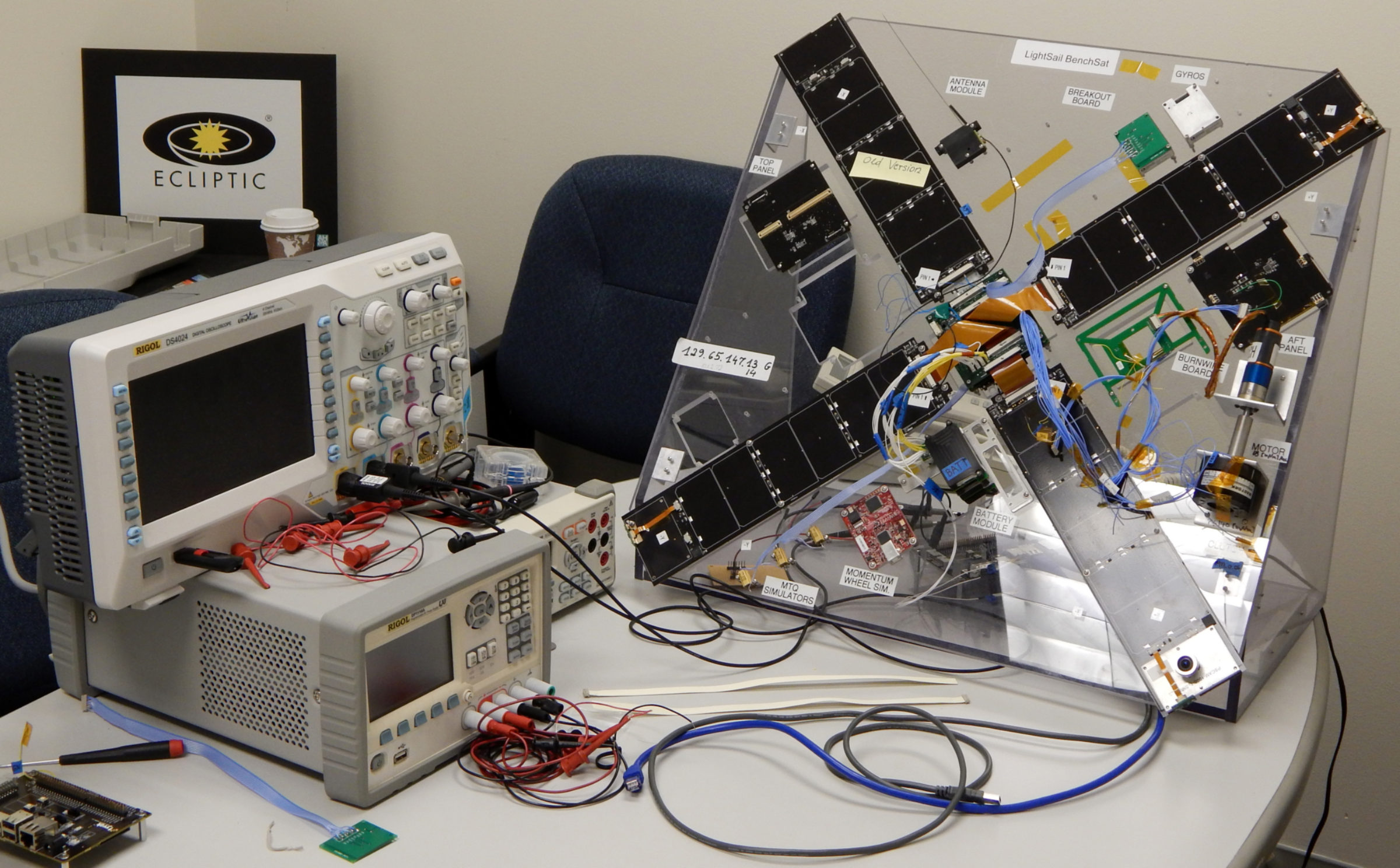Jason Davis • Sep 03, 2014
LightSail Radio Update: New Answers, New Questions
It's been two weeks since a set of recurring radio problems scrubbed LightSail 1's day-in-the-life test. LightSail 1 is the twin spacecraft of LightSail 2, The Planetary Society's solar sailing CubeSat scheduled to ride a SpaceX Falcon Heavy rocket into orbit in 2016. LightSail 1 may go on a test mission in 2015 aboard an Atlas V, but a lot of troubleshooting and testing needs to happen before then.
As I wrote in my last update, LightSail 1's radio system is drawing too much power from the spacecraft's battery. A normal power draw is 2 to 5 watts, but in some instances, the team has seen the radio pull up to 12 watts. Additionally, not enough of that power is being funneled out the spacecraft's antenna in the form of RF signals. A normal power output is 1 watt, but the signal has been registering at just a fourth of that. Confounding the situation further is BenchSat, LightSail's test unit, which also has a low RF output—but not an excessive power draw.
I previously said the team was zeroing in on an antenna configuration mismatch as a possible source of the problem. Since then, Alex Diaz and Riki Munakata have been working closely with Tyvak Nano-Satellite Systems to test LightSail's antenna and see if it is properly matched to the spacecraft's radio system. Tyvak concluded that while the antenna is indeed mismatched, it shouldn't be causing such an excessive power draw and low signal output. Diaz is now working with Tyvak to refine the antenna's configuration, which will ultimately improve the spacecraft's communications system. So while this line of troubleshooting didn't find a smoking gun for the larger radio issues, it revealed and corrected a slight performance problem.

After the scrubbed Aug. 20 day-in-the-life test, the team took LightSail 1 back to Ecliptic Enterprises Corporation in Pasadena. There, Diaz and Munakata made sure they could replicate what they had seen at Cal Poly. The results were confirmed, so they next decided to try installing LightSail 1's radio in BenchSat.
It’s not terribly difficult to swap out LightSail's radio. The spacecraft has two main circuit boards: an avionics board and a Payload Interface Board (PIB). The avionics board has two daughterboards—smaller boards that are fed by the avionics board. One daughterboard houses the connector for LightSail's battery. The other has a connector for the radio system. So, swapping out the radio means unplugging it from the second daughterboard.
And that’s what the team did. They removed LightSail 1’s radio and plugged it into BenchSat. Remember: BenchSat's radio system was also transmitting at just one-fourth of a watt, but unlike LightSail 1, it wasn't drawing excessive power. When LightSail 1's radio was plugged into BenchSat, nothing changed. BenchSat still transmitted at a fourth of a watt, with no out-of-the-ordinary power draw.

Next, Diaz and Munakata transported LightSail 1 and BenchSat to Tyvak, determined to find some answers. They began by removing the spacecraft's avionics board, allowing them to begin swapping and testing even more components. For one of their first tests, they disconnected LightSail 1's battery pack and connected the system board and radio to an external power supply.
They ran a transmission test. And everything worked properly.
It was a surprising result, so they swapped LightSail's radio with BenchSat's radio. Everything still worked. They tried again with another radio spare. Everything worked again. In all cases, just 2 to 5 watts of power were being drawn into the radio system, and a full watt was being transmitted.
So, what's going on here? Right now, the team isn't sure, but at the very least, they've found a configuration in which the radio system works correctly. Is there a problem with the spacecraft's battery system? More testing is on the way.
Support our core enterprises
Your support powers our mission to explore worlds, find life, and defend Earth. You make all the difference when you make a gift. Give today!
Donate

 Explore Worlds
Explore Worlds Find Life
Find Life Defend Earth
Defend Earth

